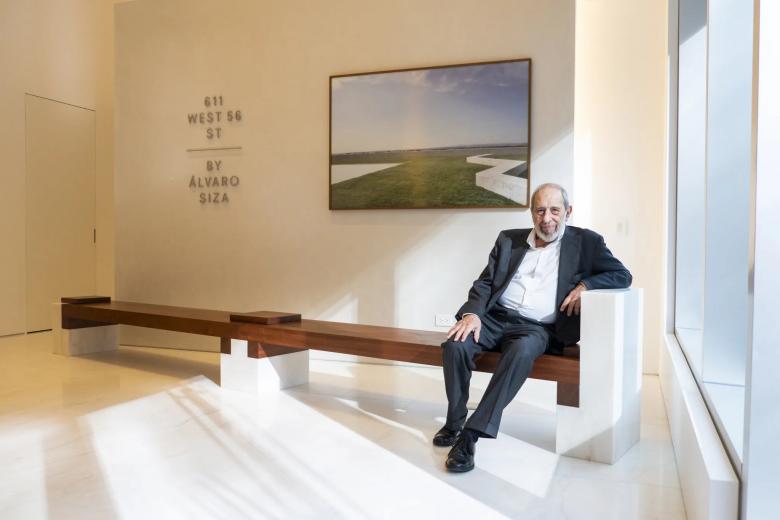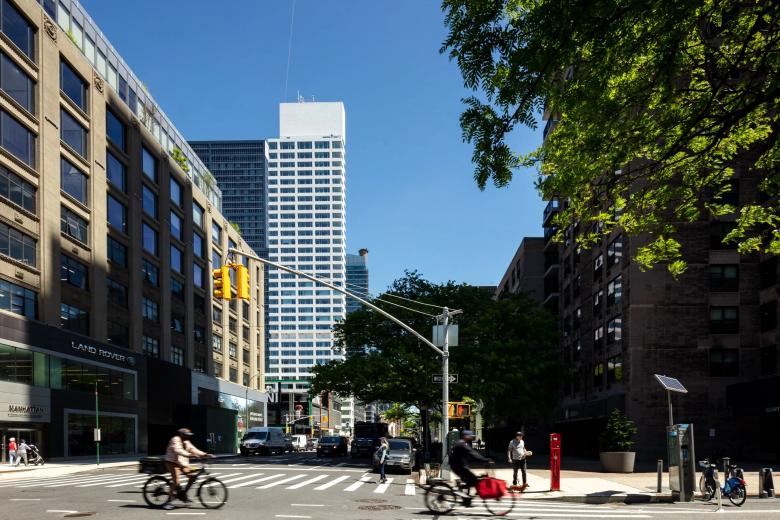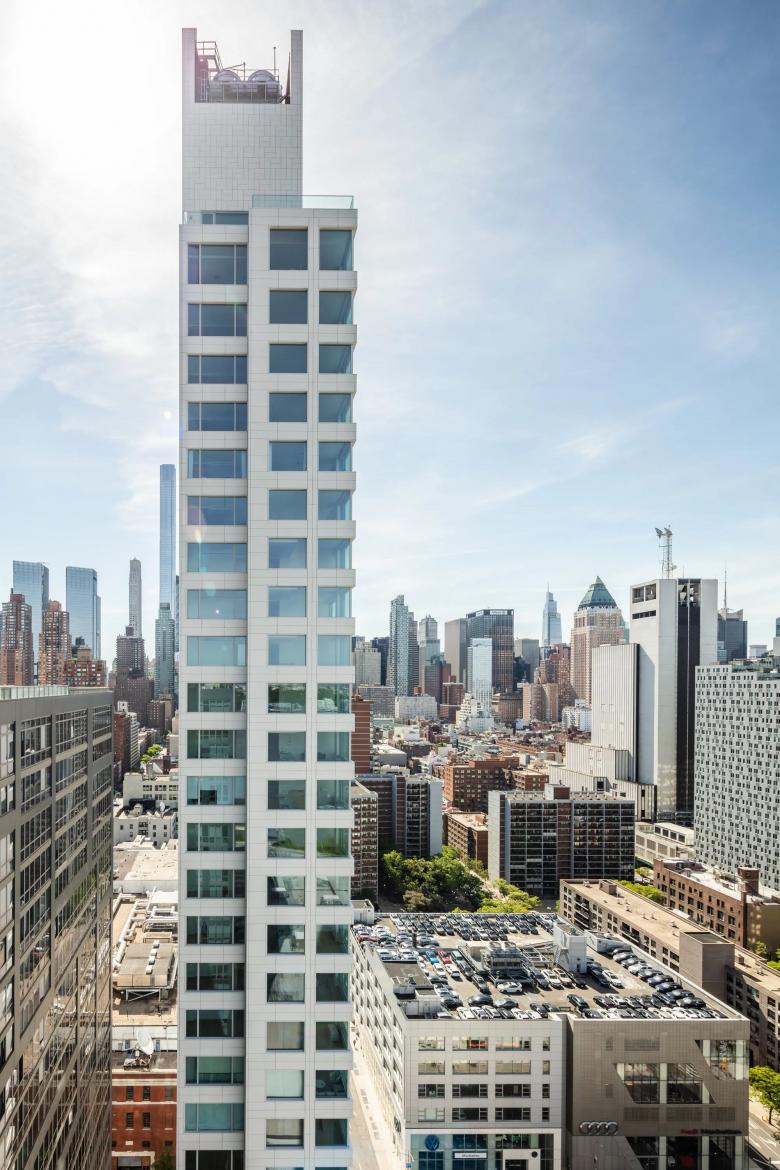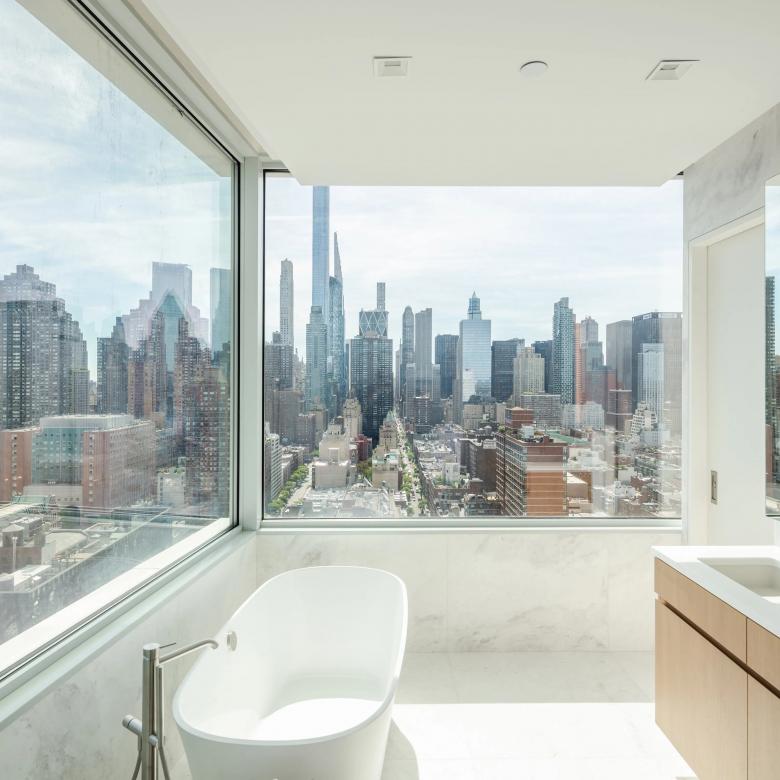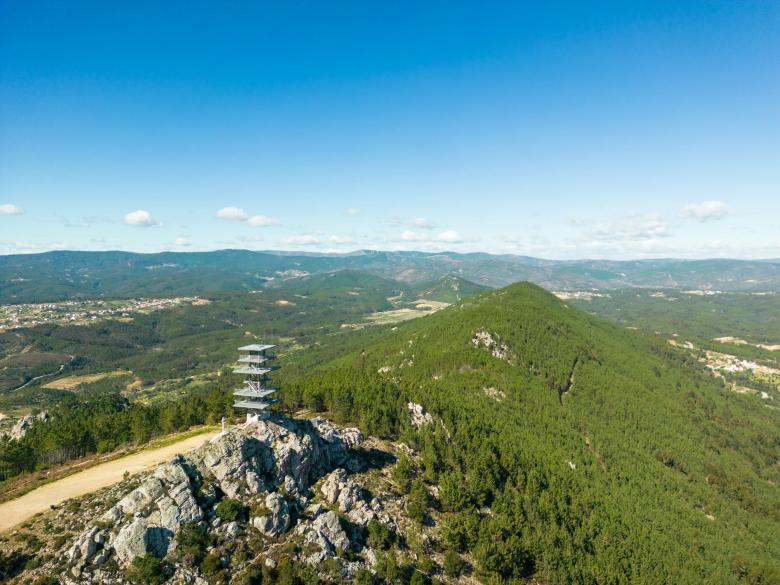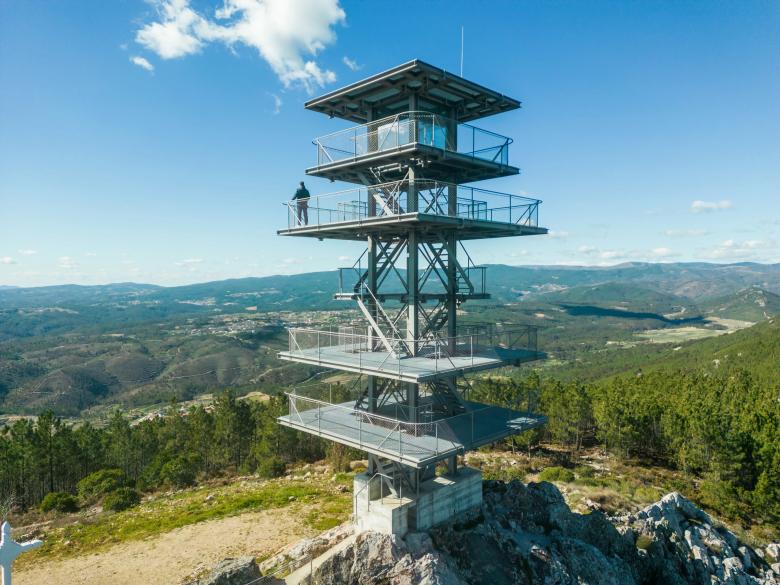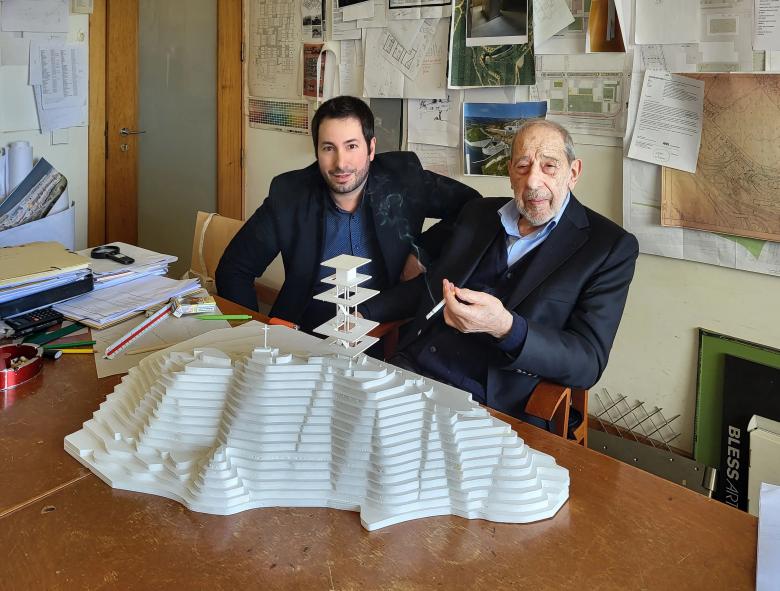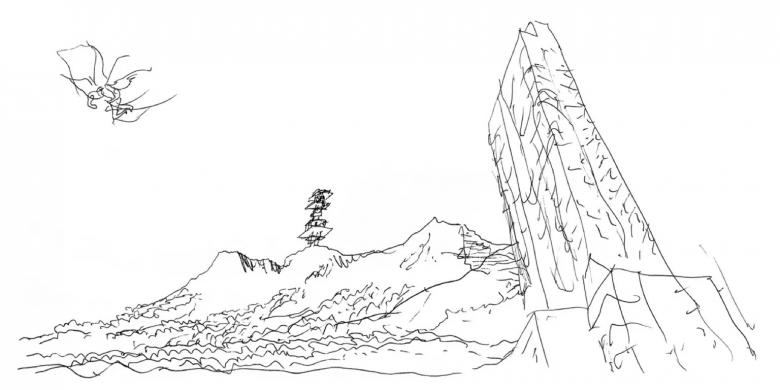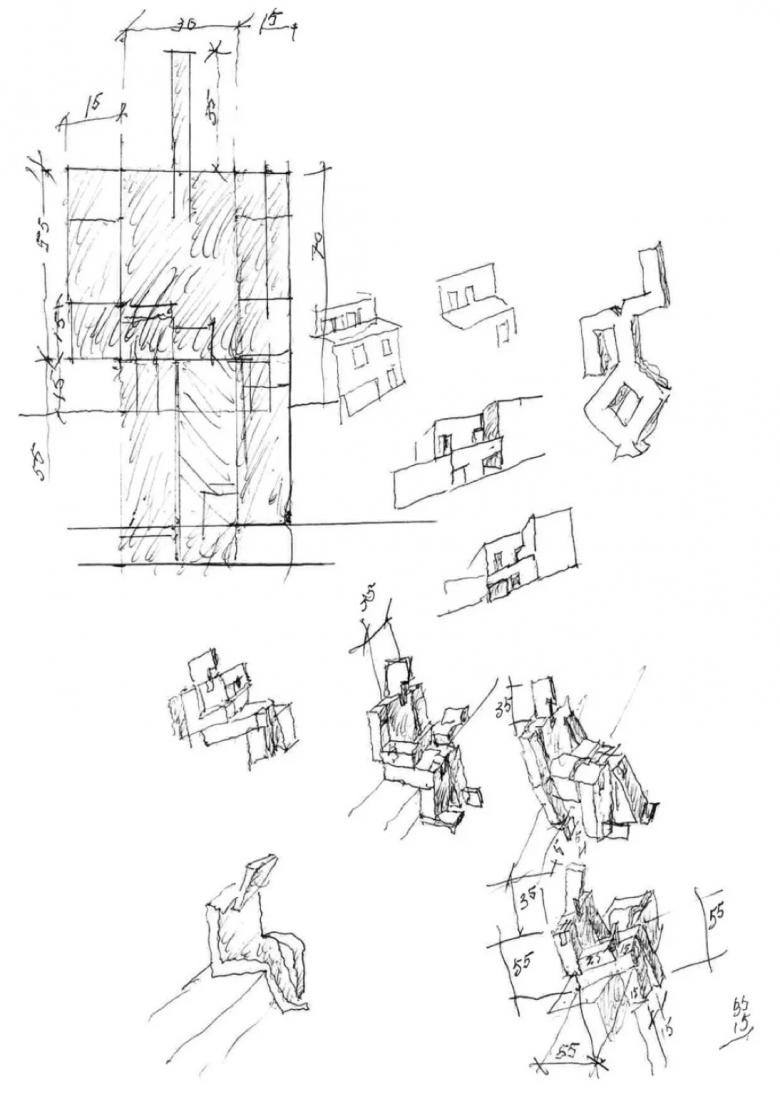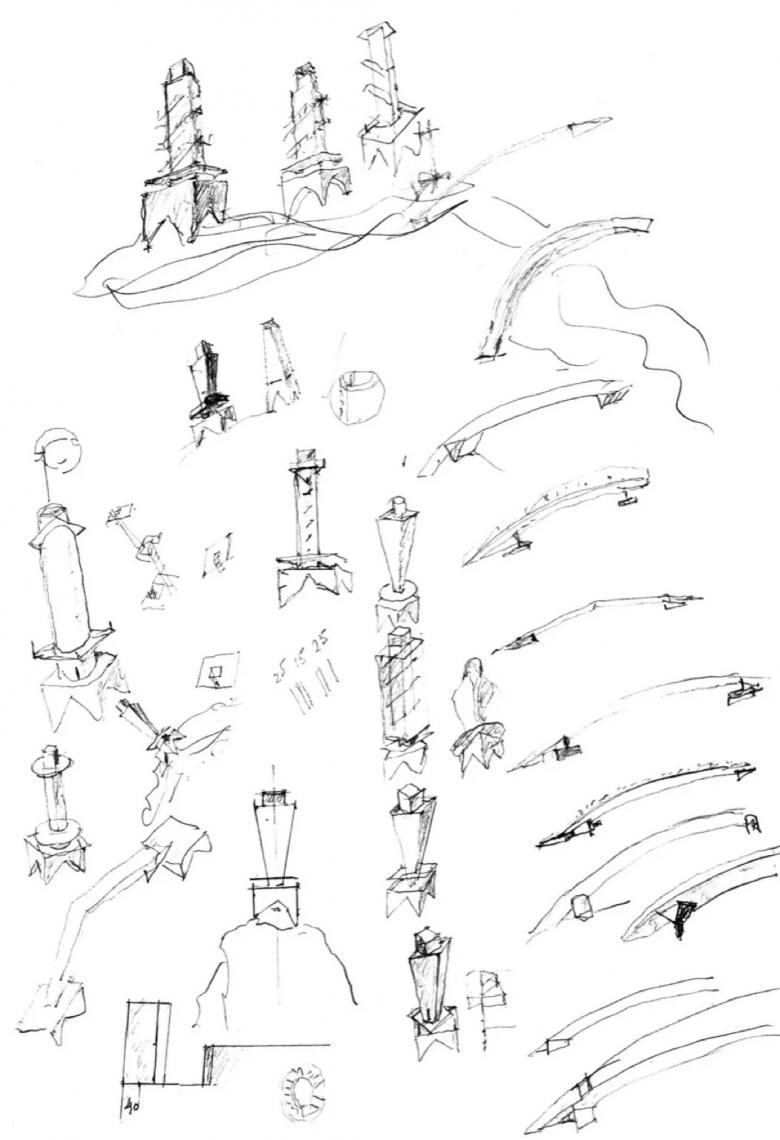5. 6月 2023
Álvaro Siza in the lobby of the 611W56 Tower in Manhattan (Photo © Slideshow)
On June 25, Álvaro Siza will celebrate his 90th birthday. The Portuguese architect is still active, designing and constructing projects in various locations around the world. An exhibition titled Two Towers is on display in Berlin until early July, showcasing two of his projects that embrace local context while engaging with global themes.
Throughout his extensive career in architecture, Siza has designed a remarkable number of towers, among many other buildings, several of which have been realized. The two tower projects showcased in the exhibition Two Towers: 90 Years Álvaro Siza, curated by António Choupina, serve distinct purposes and are antipodes in their appearance. In Manhattan, there stands a slender, luxurious residential high-rise reaching 137 meters (450 feet) in height, constructed between 2014 and 2022. It forms an unlike pair with a 16-meter (52-foot) tall observation and watchtower built in the Portuguese landscape from 2018 to 2021.
When contemplating the two towers, the initial references that came to my mind were the description of the Downtown Athletic Club in Rem Koolhaas's Delirious New York for the high-rise in Manhattan and beatnik Jack Kerouac's novel The Dharma Bums for the watchtower. In the latter, Kerouac recounts his experience as a fire lookout on Desolation Peak in the State of Washington.
611W56 Tower (Photo © João Morgado)
Residential tower in ManhattanThe 37-story residential tower in Manhattan represents Siza's debut project in the United States. It is situated one block away from the Hudson River between Riverside Park South and Central Park, at the corner of West 56th Street and Eleventh Avenue, in the vibrant neighborhood of Hell's Kitchen (also known as Clinton or Midtown West). The elongated rectangular site is diagonally cut by an existing building along Eleventh Avenue. As a result, the volume tapers towards the river, creating the illusion of a much more slender tower when viewed from a distance. Towards 56th Street, a plinth of up to eight stories aligns with the site geometry, with the actual tower rising from it in a slightly recessed position.
611W56 Tower (Photo © João Morgado)
The podium and tower accommodate 80 luxury apartments ranging from one to four rooms, including larger duplex units spanning two floors. At the top, there is a spacious, two-story penthouse. The facade, with its uniform grid pattern, reflects the urban grid of Manhattan, concealing any hints regarding the residential units or functions behind it. Most apartments afford breathtaking views of the river landscape on one side and the high-rise skyline of Midtown on the other.
611W56 Tower (Photo © João Morgado)
Among the amenities accessible to all residents, there is an enclosed patio with a garden on the second floor, a lounge with an inconspicuous catering kitchen, a children's playroom, a media room with billiard table, a fitness center, steam baths, a yoga studio, and a boxing room. These features reflect the growing importance of physical fitness and self-optimization in this price segment of housing. The interior design, characterized by finesse and minimalism using exquisite materials, was conceived by New York-based interior designers Gabellini Sheppard.
The exterior appearance is largely determined by the uniform grid of window openings and the facade clad in white limestone, which stands out prominently within the urban context despite its modest height. The stone panels are arranged in a double herringbone pattern, creating a delicate relief in grazing light, with slight irregularities adding to its three-dimensional effect. The rear facade facing the interior of the block is almost entirely clad with limestone panels, seamlessly enclosing the technical rooms at the top of the tower and thus emphasizing the tower's strong spatial presence.
Observation tower in Proença-a-Nova (Photo © João Morgado)
Observation and watchtower in PortugalIn contrast to the luxurious tower in densely packed Manhattan, the second project takes on a more modest appearance within the Portuguese landscape. It is a watchtower and observation deck located in the UNESCO Geopark Naturtejo, situated between Lisbon and Porto in the sparsely populated municipality of Proença-a-Nova. The population of this region has decreased from 17,000 to 7,000 since 1960, prompting the municipality to seek strategies to attract more residents.
Observation tower in Proença-a-Nova (Photo © João Morgado)
The 16-meter (52-foot) high tower is located 616 meters (2,020 feet) above sea level atop the summit of the Serra das Talhadas mountain range, offering sweeping views of the expansive landscape. Its primary function is to allow early detection of forest fires during the summer months. Additionally, the tower serves as a hiking destination, making it possible for visitors to admire the panoramic mountain scenery. A tower previously occupied the same spot along the trail that needed replacement. Inspired by the anchoring of the concrete foundation in the rock and the distinct iron structure of the previous construction, Siza developed the new tower with four square cantilevered platforms. These platforms are interconnected by two parallel stair systems forming a circular route. The essence of the previous structure also influenced the new design, which stacks three levels open to visitors and the slightly smaller top platform with a roof for monitoring the landscape.
Architect and curator António Choupina with architect Álvaro Siza and a model of the tower in Proença-a-Nova (Photo © Marc Dubois)
Supported by four steel columns and featuring the projecting metal platforms, the observation and watchtower stands as a filigree landmark in the landscape, making a delicate appearance even from a distance. Siza's approach to the design of the observation tower reduces the architectural intervention to its essential elements, allowing the magnificent natural surroundings to take center stage.
Sketch “Two Towers” (Drawing © Álvaro Siza)
Tower sketchesAs with all his other architectural projects, Siza approached the task of designing the two towers through numerous sketches. As an incredibly prolific draftsman, he thinks with his pencil, creating collages that illustrate the discourse and evolution of the projects. Siza uses sketching not only as a step in exploring a concept but also as a commentary on his own design thinking and references to building history. In this working process, these captivating sketches provide insights into his understanding of the task, the context, and his approach to the final form. They also document his search, the craftsmanship involved in gradually developing the result, as well as the recapitulation of built and conceptual projects by fellow architects, often accompanied by comments on his own work, all densely packed onto the sketch sheets.
Sketch for a sculpture for the 611W56 Tower in Manhattan (Drawing © Álvaro Siza)
Accompanying the exhibition is a catalog in which the curator, António Choupina, provides an introduction explaining the significance of towers in Álvaro Siza's body of work. Siza himself offers insights into his thinking through short texts on both projects. The exhibition showcases the two tower projects through expressive sketches, large photographs, and models. Interviews with Siza are played on screens, and elegant furniture designed by Siza for the Chinese furniture manufacturer and Aedes sponsor Camerich is also on display.
Sketch for the tower in Proença-a-Nova (Drawing © Álvaro Siza)
From the very beginning, Siza's architectural works have been situated between local conditions and engagement with global themes. The two towers presented in the exhibition exemplify this. One is located the density of Manhattan, where it was essential to stand out subtly against the neighboring masses of banal buildings, the other is nestled in a fragile natural landscape, which was staged without appearing dominant because of the structure. While one offers a stage for the hedonism of the metropolis, the other focuses on the experience of nature, where wind and weather remain defining factors … which brings us full circle to Koolhaas's Delirious New York and Kerouac's wanderers on the high mountains.
May 27 – July 5, 2023
Aedes Architecture Forum, Christinenstrasse 18-19, 10119 Berlin
Sunday and Monday: 1pm–5pm; Tuesday–Friday: 11am–6:30pm
This article was originally published as "Weitsicht: Zwei Türme von Álvaro Siza" on German-Architects. Translation by Bianca Murphy.
